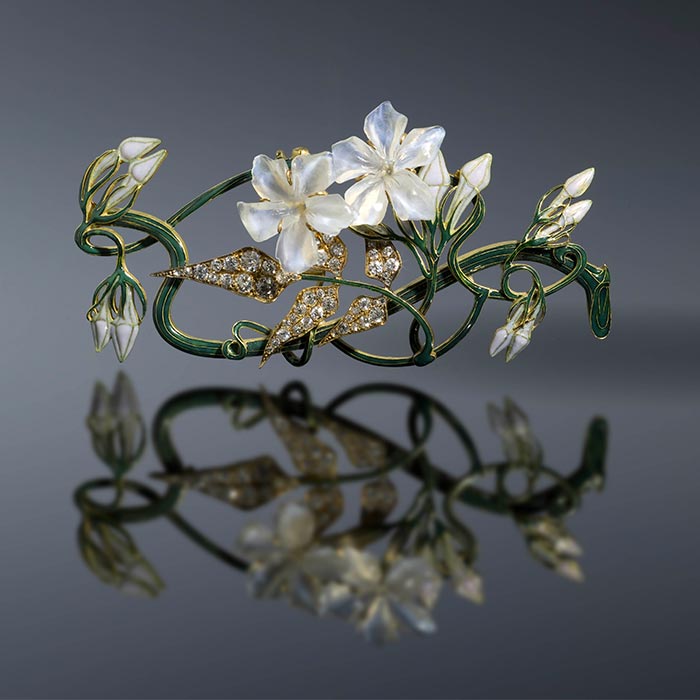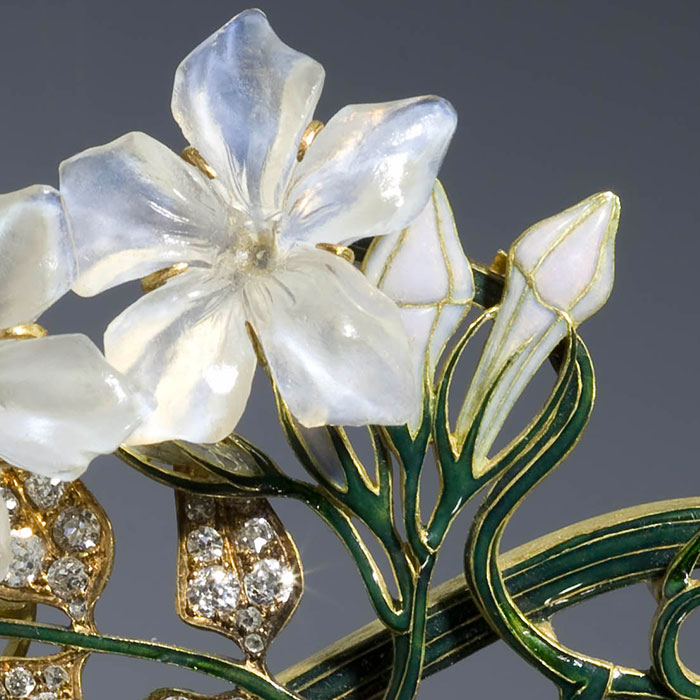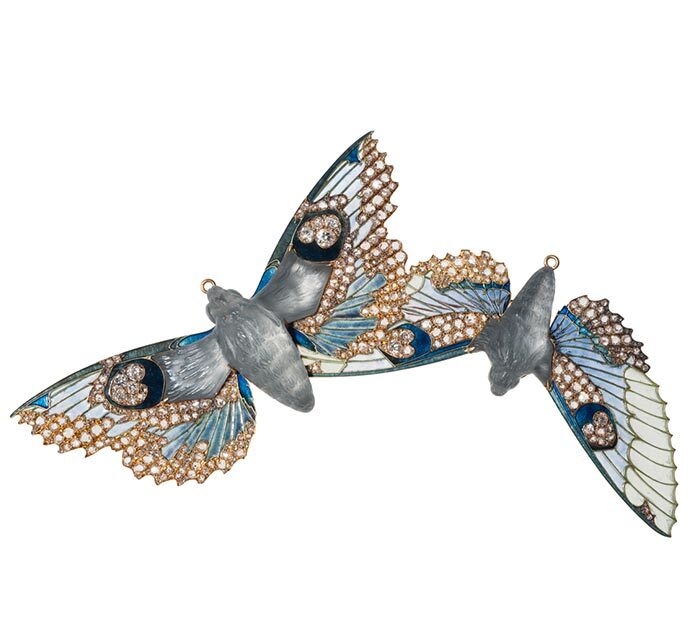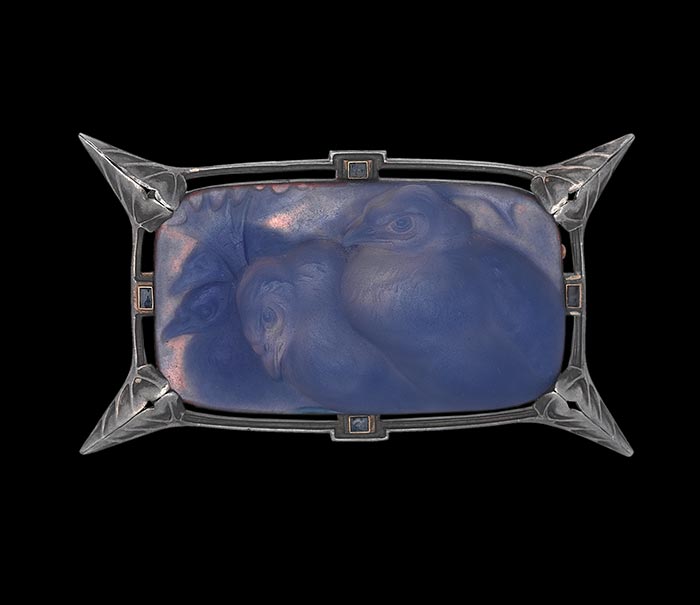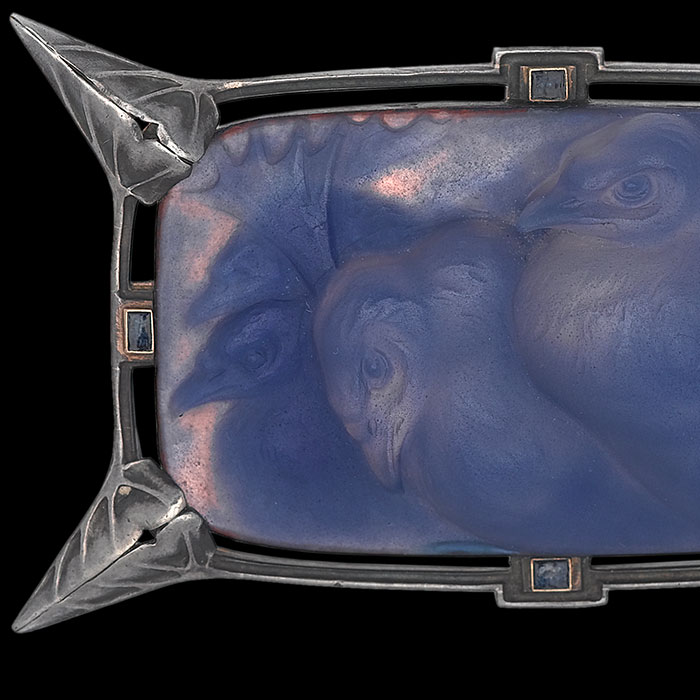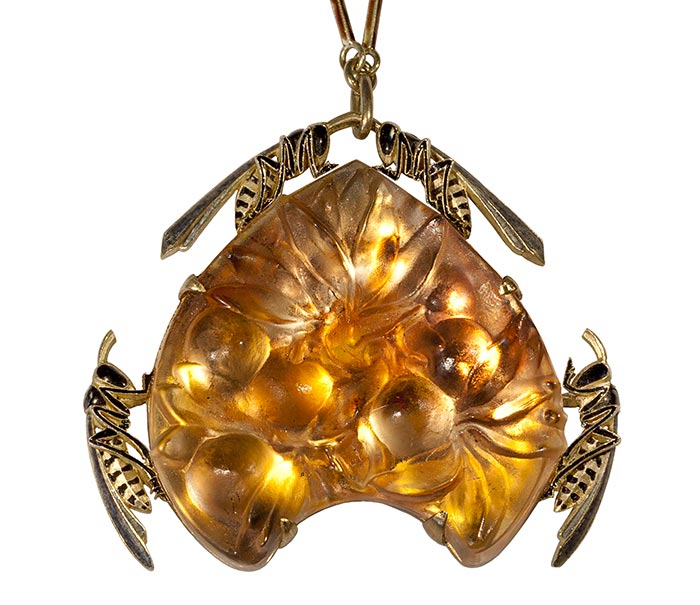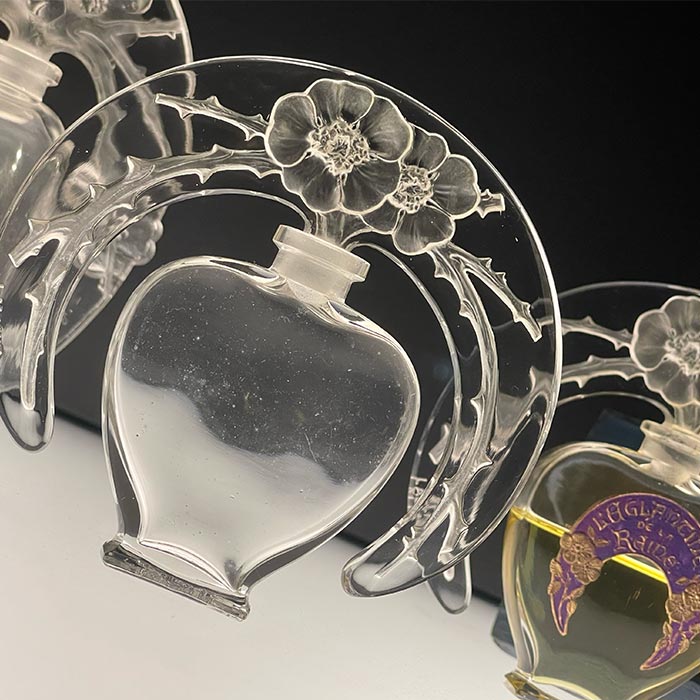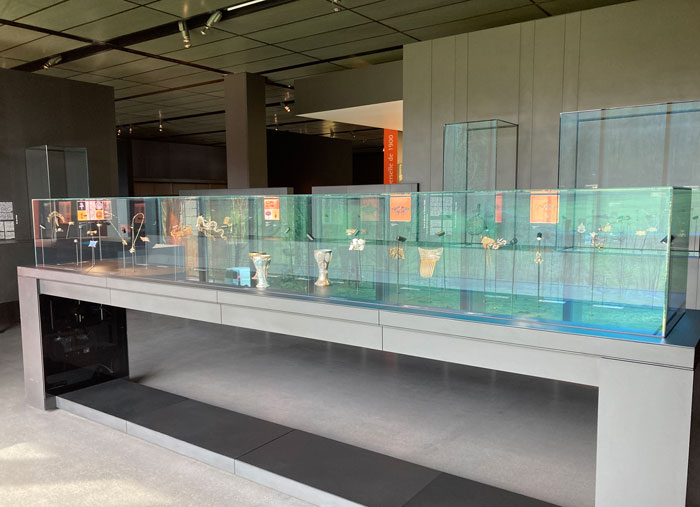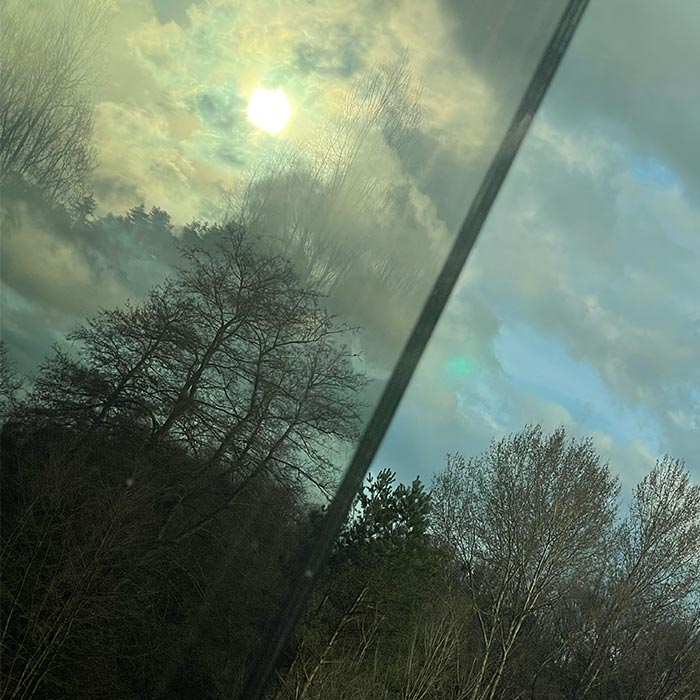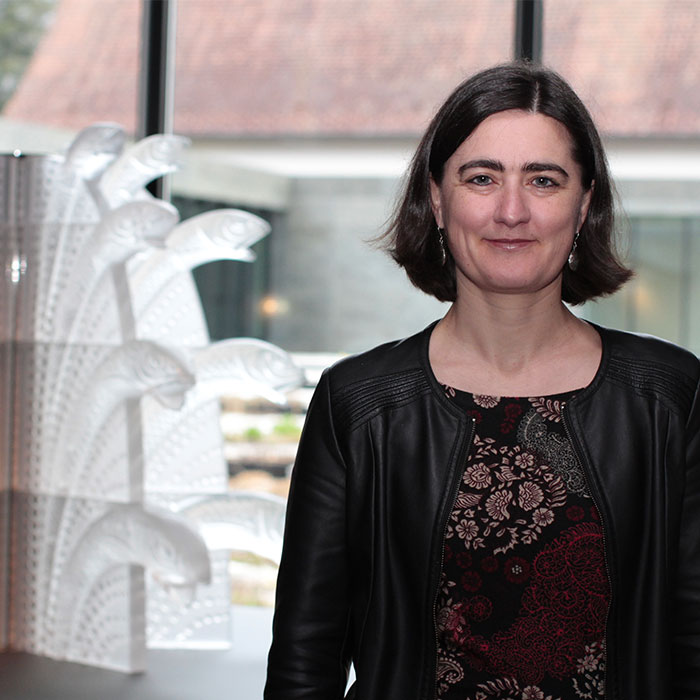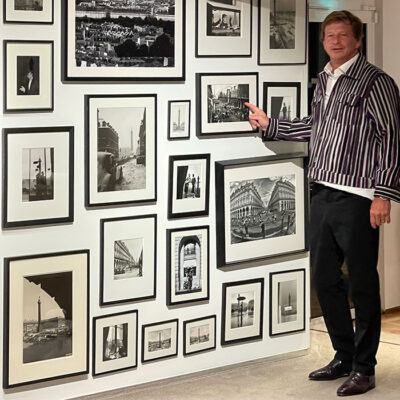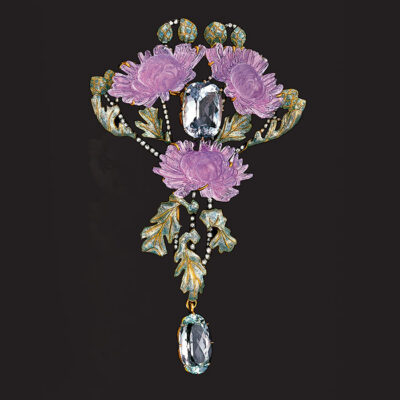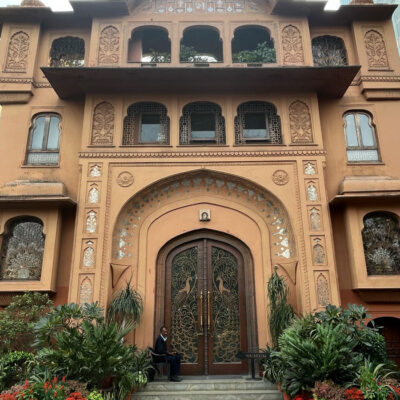Jewelers routes
24 May 2023
Share
The Lalique Museum, the artist’s glass universe
This museum, located in Wingen-sur-Moder, in the heart of the Northern Vosges – a region with a rich glassmaking tradition – gives visitors a rich insight into the growing importance of glass in the work of René Lalique. In fact, at the height of his career, he even abandoned jewelry-making altogether.
By Sandrine Merle.
Housed in a building that combines ancient and contemporary architecture (renovated by the architect Jean-Michel Wilmotte), the Lalique Museum is a public institution established in the village where the artist founded his glass manufacturing company in 1921. Organized chronologically, it focuses on Lalique’s glasswork through 650 objects, including about sixty beautiful pieces of jewelry.
Jewelry, manifestos of Art Nouveau
It all begins with the famous brooch made up of five diamond swallows (which can be worn separately) that Lalique presented to Boucheron. Initially, Boucheron refused it, but later changed his mind after seeing the finished masterpiece. Then there’s the “Houx” dog collar, the sublime “Soleil Levant” (Rising Sun) comb inspired by Japan, the “Laurier” diadem, and the “Dancing Nymphs” pendants. Breaking away from his contemporaries, René Lalique chose his materials primarily for their esthetic value: instead of precious stones, he used horn, coral, ivory, or enamel as well as his favorite material: glass. Not only did this allow him to capture the subtlety of nature’s colors and achieve a stained-glass effect, it also replaced gems that were often marred by inclusions.
The rise of glass
“It was while exploring enamel techniques for his jewelry that René Lalique discovered the possibilities of translucent glass,” says Véronique Brumm Schaich, director of the museum. Glass appeared in his work as early as 1890, but gradually played a more and more important role, as shown by the “Nymphe Rose” brooch of 1905, a manifesto of Lalique’s style. On the central section, figures appear in relief on the front and intaglio on the back, creating a striking effect. With glass, Lalique could create round and detailed volumes, as seen in the “Quatre Paons” and “Guêpes et Prunus” – both veritable sculptures. His father-in-law, Alphonse Ledru, who worked for Rodin, probably influenced him in this direction.
The triumph of glass
“The last piece of jewelry, a lovely ring engraved with a glassblower, was a sign of things to come,” says Brumm Schaich. In 1912, René Lalique stopped producing unique pieces of jewelry to focus exclusively on mass-produced glass objects. “He was tired of seeing his jewelry copied and had never hidden his desire to explore other avenues. His muse and wife, Alice, had passed, and he had met the perfumer François Coty, who introduced him to perfume bottles.” The museum presents a fabulous collection of these bottles, which belong to the current owner of the Lalique company. Other areas of the museum are dedicated to this new era, to Lalique’s glasswork: vases, tableware, religious art, lighting, etc. There are only a few pieces of glass jewelry left, designed by his daughter Suzanne during the Art Deco period. They are made up of glass plaques, beads, and cubes, which are often enameled.
A moving visit to an intimate and tranquil place, to be continued on the rooftop terrace planted with vegetation dear to Lalique, with views out over the natural landscape he loved so much.
In partnership with L’École The School of Jewelry Arts as part of the “Jewelry Collections of the World”.
To learn more: Five reasons to visit the Lalique Museum



